This is an interview with Jessica Smulders-Cohen of Greater London Fibreshed, who are trying to build a network of small-scale clothes manufacturers using natural materials produced in the UK.

London Cloth Company industrial looms that have been rescued from rotting mills and lovingly coaxed back to life by Daniel Harris, who single-handedly runs it with just his cat for company.
Lowimpact: Hi Jessica, what have you been up to recently?
Jessica Smulders-Cohen: I’m quite excited about an event I attended recently; part of a series of 3 events called Threads, hosted by the Sustainable Fashion London Group – based at Impact Hub, a co-working space in Kings Cross. The theme was whether sustainable fashion is actually an oxymoron. The first event was in February and it was called From Fibre to Fabric – Sustainable Sourcing; the event last week was called Mindful Manufacturing and the next one in on Sep 20th, called Conscious Consumerism. Anyone interested can go along, whether or not you’re in the industry. You might want to set up your own business or just be interested.

Sheep at a city farm in London.
LI: So, is sustainable fashion an oxymoron?
JSC: It depends. There are two camps. There are the ‘slow fashion’ people, who’d like to bring down the fast fashion that’s developed in last generation or two. This includes care of clothes, better quality, buying less, not jumping on the consumerist bandwagon. They tend to ask things like how many shirts do you need anyway, and they focus on clothes made from natural materials, hand weaving, natural dyes, and making connections to the land. The other camp includes people who say that ‘my granny hated darning socks – she’s glad she doesn’t have to do it any more’. Changing your style is good – it represents freedom. Poor people used to have one shirt only – they can now dress themselves cheaply. They’re saying some good things – one person is making clothes from paper yarn – if buy one of her t-shirts, you wear it once or twice then compost it. It’s fast fashion – especially if you go out in the rain! People are stuck in habits – we have to accept this and work with it. It’s an interesting approach. The fashion industry such a huge beast, it will take generations to turn around / wind down. We need faster solutions. Sustainable fashion isn’t an oxymoron if you’re willing to be a sensible dresser – there aren’t any excuses if there are sustainable, quality things out there. But sustainable fashion isn’t marketed enough. They don’t have the marketing budgets of the corporates.

The African lady on the spinning wheel I took last summer – it was a stand set up at Lambeth County Fair by the ladies who spin wool at Vauxhall City Farm.
LI: What does ‘fashion’ actually mean?
JSC: ‘In fashion’ means what is trendy at the moment. There are people who decide this – eg how wide or narrow trousers will be. The most dangerous thing in terms of environment is the hunger for the new. Usually it’s a rehash. Styles keep coming back 40 years later. People are easily bored when it comes to consuming – which is very dangerous for ecology. But if sustainable fashion can become trendy, that would be a step in the right direction. But we want to spread the word that sustainable fashion doesn’t have to mean rough / hessian / hairshirt clothes. We need to show the world that fashion can be sustainable, comfortable and stylish. Quality garments will cost more, and they might provide an air of ‘I don’t care about latest trends’. We have to be strong! It’s a good idea to avoid big brands, which often hurt people in poor countries. I think that nowadays, if we stopped buying brands whose factories are in Asia – it won’t hurt people in those countries too much – Asian markets are growing rapidly. We can all produce clothes locally and sustainably. It would be good if we could provide a better example in the West.

London Cloth Company.
Going back to sustainable fashion – sustainable could mean second-hand, but they were corporate when new. It doesn’t build alternative sources. It could also mean ‘convivial’ – people make jumpers in your community, you find out who they are, order one, or they could have one in stock. There are a lot of older women in many communities who still have these clothes-making skills, and would love to do it. They often have the spare time. A friend of mine is building a ‘team of grannies’ – doing just that. This could be a big new thing – maybe through the church or religious organisations – and they often have knitting circles at community centres. Almost every neighbourhood has an old people’s home. You could pop in for chat, and ask if anyone would like to knit you a jumper, socks or a scarf, and that you’ll pay for it. This kind of thing can bring generations together and prevent depression in older people.

London Cloth Company.
There are a lot of things happening. There’s a brand called Freitag – it’s two Swiss brothers. They’ve done what Fibreshed is hoping to do – their clothing is made in Switzerland and north Italy. They’ve invented denim that’s not made from cotton (which is heavy on pesticides and water) – it’s made from locally-grown flax, and it’s fixable, natural, unbleached, dyed with natural dyes, and compostable.

Pieces of silk, which I dyed with onion skins (two kinds – white and red), avocado skins and eucalyptus leaves. It was part of a natural dye workshop in Bristol with Botanical Inks – they promote the use of kitchen waste and garden compostables such as tree trimmings and nettles as a free natural dye resource.
LI: Isn’t sustainable fashion expensive?
JSC: Well a pair of Freitag jeans can cost £200. There’s a premium on quality, sustainable, non-exploitative stuff. But, how much are you willing to value things that take a long time to make, and that don’t impoverish workers? Plus nature won’t be damaged in the process. People have realised that they’re going to have to pay a bit more for good food that doesn’t poison the environment and isn’t transported across the world. The price will come down if more people do it. I went to People Tree’s screening of ‘True Cost’. It was very good. If you pay £2 for a t-shirt, you’ve helped maintain slave labour, toxins in rivers etc. Plus there’s a knock-on effect. If you pay a reasonable price for locally-produced, sustainable goods, then those people are going to have the money and the desire to buy things from you when you set up your local, sustainable business. (NB: we talked about this in this article, about how much a loaf of bread should cost). And if you buy one jumper for £80 or 10 for £80 from primark,they won’t last as long as the one quality jumper.
It’s best to avoid corporate brands – they all make their clothes in dirty factories that exploit workers. Even if they say ‘Made in Paris’, like one luxury fashion brand did – they bring over Chinese workers to set up a sweatshop in paris. Corporate brands that are made locally still aren’t a good idea.
LI: What are the barriers to the growth of sustainable fashion?
JSC: First, income. If you’re on a low income, you can’t buy into this movement. But in that case the second-hand shop idea is good – plus your money goes to charity.

The red bits of cloth and yarn sitting on the bowl were dyed with madder, the root of a native British plant, up at the Cordwainers Garden in Hackney.
Secondly, it’s expensive because there’s not so much of it around. What’s happening with the British Wool Board is insane. You can’t just approach a farmer and ask for wool – the British Wool Board prevents it. This is left over from when UK wool was in high demand. Now it’s just seen as something- a waste product. So laws preventing people from selling their wool to whoever they want is just bureaucratic nonsense. It needs to go. The UK wool industry is nearly dead, but reviving. This is a big barrier. There is a wool campaign – supported by Prince Charles – to promote the use of wool – a natural product, but in the UK it’s mostly from Australia. Let’s take on the Wool Board and change legislation. Let’s help young designers get wool – it’s classified as a waste product and yet you can’t just go and give farmers money for it. This is technically illegal (although depending on the farmer, you can still do it). All wool is supposed to be sold through the Wool Board.

This homemade loom, which I made with my friend Shane Waltener from things we could find in his studio is a frame-less back-strap loom, which we have improvised a Scandinavian style fixed heddle for out of straws, wooden kebab skewers and the slats from an old Venetian blind.
LI: How can we make it happen?
JSC: If there’s enough demand it will change. You can help by buying clothes made in Britain. Also, don’t buy acrylic. A few mills are being revived. It’s a niche market as yet – let’s make it bigger. There are spinning mills and weaving mills – 2 different processes. You can visit a city farm – e.g. Vauxhall city farm in London. They spin their own sheep’s wool and you can buy their yarn. Do a bit of research to find places near you. City farms avoid the Wool Board – maybe because they’re charities. There are other businesses doing interesting things too, like Daniel Harris at the London Cloth Company, who use only British materials in producing their cloth. You can help the word get out – the more people horrified at how the Wool Board is run, the more it is likely to change.

The rest are also looms I have made – this one was installed in Spitalfields Church as part of my choir, MUSARC’s, Christmas concert in 2014.
In the 1950s, two thirds of UK wool in jumpers, scarves etc. was actually recycled. You can take a woollen jumper, shred it, and you can re-spin it and use it again. People used to get old wool from ripped jumpers, socks etc., pulp it and make new wool. It was actually more desirable – mixed wools were more valuable because they different grades – so soft and rough, a mix of merino / cashmere / plus lower quality which was both strong and soft. Because it was recycled it was also cheaper, so you’d get better quality for your money. There’s a more recent example from Colombia, where a spinning mill was going out of business. They used raw wool to make yarn and sell on. They realised that fabric factories had a lot of waste – mainly the corners cut from patterns, so they went round and collected it from weaving mills etc. They picked up bags of waste, unravelled it, re-made yarn and got a free resource. By using waste, the owner found a free raw material, and got a premium on her yarn – because it was recycled. People will pay more for things that don’t damage the environment. They thrived.

This one was designed by product designer and fellow weaver Travis Meinolf, who wanted to make an IKEA style flat-pack loom for ease of use in a domestic environment.
LI: How do you deal with kids demanding brands?
JSC: Just say no – they’ll get over it.
LI: What are you doing, work-wise?
JSC: I’ve been working with a company in Ghana called Soul of Africa. I’ve been working on a collaboration between the UK footwear / clothing industry and artisans around the world – they use more sustainable methods and there are no sweatshops. An organisation called Future footwear wants to set up something called the Artisan Centre, linking young designers to makers in Africa and India. It’s a way of supporting sustainable way of life involving craft and using local materials. These crafts are just being revived in the West but they still exist in Africa. We can work with them until we can revive these crafts properly over here. I’m quite critical of companies like Toms, who have a scheme whereby for every pair of shoes you buy from them, they send a pair to a poor country. This is a really bad idea as it destroys local, sustainable industries, and relies on bad manufacturing practices. We should help industries develop in poorer countries, not dump free goods on them that destroy those industries. Charitable intentions are often not thought through properly.

This is the same loom, but assembled in the DAKS Clothing tent at Wool Week in Potters Fields next to Tower Bridge a few years ago.
I’m also going to set up a database of local clothes manufacturers – even if they only make a pair of socks a week. Often these small producers don’t have a website. People can then find locally-made clothes, and it will help makers who don’t know how to market their clothes. It works both ways.
The main reason it hasn’t taken off yet is that most advertising is by corporates, and small makers don’t have the budget or the marketing experience to compete.
I’m also looking to make London cloth – like the Bristol cloth that is already being made. Plus I’m helping develop a UK Fibreshed, but keeping the local Fibresheds too. Bristol cloth is made from raw materials produced from near Bristol for example, which is a good thing.
This sector is growing. Lots of people don’t want to feed the corporate fashion beast, but they don’t want to go back to sackcloth and ashes either. We need a middle ground. There are also higher tech methods being introduced – like making clothes from fungi!
LI: Thanks Jessica – we’ll be talking with you again about UK Fibreshed and your database of small clothes manufacturers.

…and, finally, this one was part of an exhibition I curated with a photographer in St John’s Church in Notting Hill for their annual Mayfest (2013) – it was titled “Threads of Sound” as it was built in response to their resident pipe organ, which, funnily enough, are constructed fairly similarly to looms as it turns out. So it is part loom part pipe organ (you can’t see the pipe organ bit in the pic, although it is the blue rope you have to pull on to make a sound – it was very DIY, made out of old plumbing tubes.)



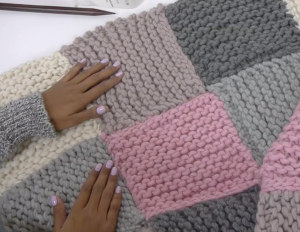
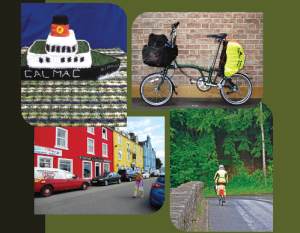
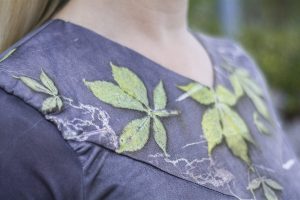

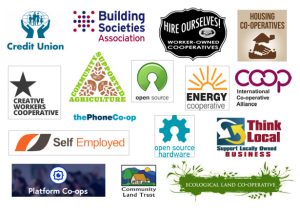
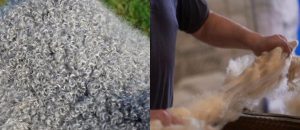
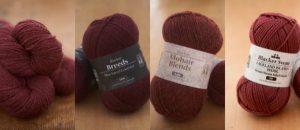
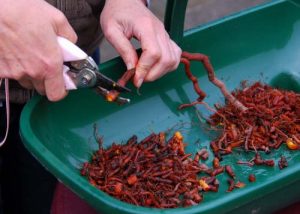

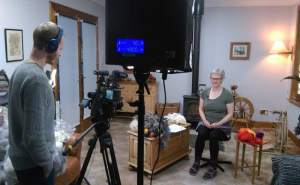
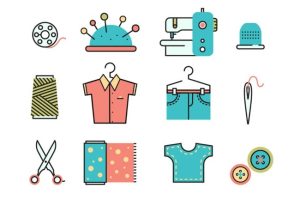
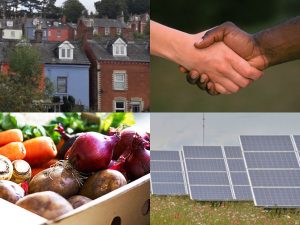

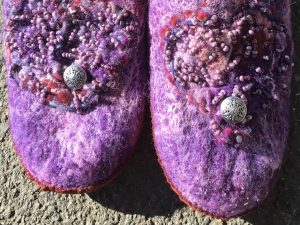
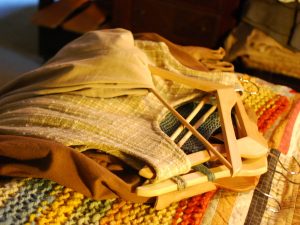
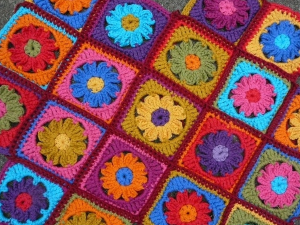
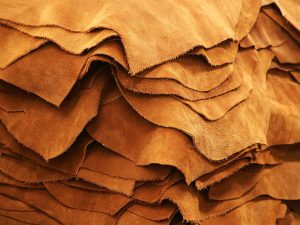
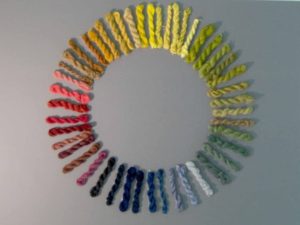

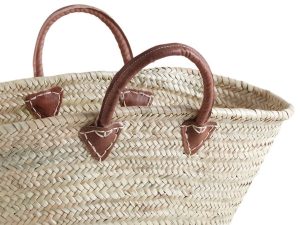
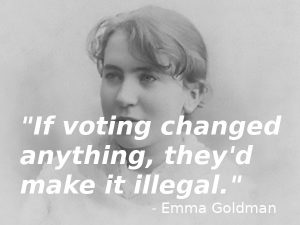

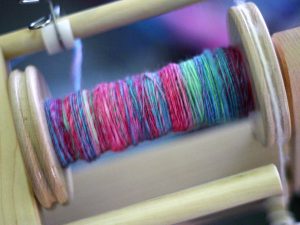


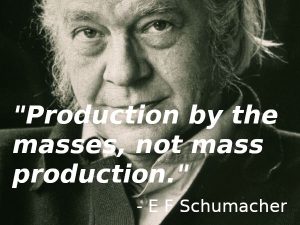
6 Comments
I have to say that reading this article is, for me, like seeing how the other (richer) half live. £80 for a jumper or £200 for some jeans!!! Our fashion emporiums are Oxfam, Help the Aged, The Cat Charity Shop. T shirts that dissolve in the rain.. mind boggling. Living in an area where sheep are kept, I can totally agree regarding the wool board – it’s an anachronism. Very odd it’s still here in our ‘free market’ economy.
No, we definitely don’t have a free market. If banks fail, they take our money to bail themselves out. Good luck with that if you’re a small company. The CAP goes to big farmers – smallholders need not apply. And tariffs are used when required by the rich.
But the high prices thing – it’s the same with the £4 loaf of bread argument. I think a pair of jeans that will last much longer than branded jeans, which didn’t involve any pollution, sweatshop labour or corporate profit is well worth £200. A lot of people (present company excepted) are happy to pay that for a phone or a pair of sweatshop trainers. And a loaf of bread that costs £1 is corporate, environmentally-damaging, ruins farmers and isn’t nutritious.
If you don’t have the money to do it, you can’t do it – but some can, and if they can, I think they should, so that the price starts to come down. I think we’ve got used to very cheap food and clothes – but there’s a price to pay somewhere.
I do agree food is too cheap – that cheapness has been achieved at the cost of global exploitation, squeezing farmers until they’re driven out or kill themselves and, to the disgrace of our country (UK), the exploitation of cheap labour from overseas. But, and this is the rub, despite food being relatively cheap, cheaper than ever before, we have people depending on food banks and children going to bed hungry.
I think the biggest cause of this isn’t poor people spending on plasma tellies and smartphones as some right wing idiots have said, it’s the relative cost of keeping a roof over your head.
The house price boom has been powered by demand and the availability of credit – and who wins from credit? The banks. It’s a bit like the company shop – a ploy to keep the workers screwed down but on a general scale.
With clothing, I’m happy to buy cheap from abroad – but I’d like to see those factories forced to maintain decent standards and decent wages relative to the local economies. And if you can afford £200 for those jeans – good luck to you.
Agreed to all that – except that I don’t see any mechanisms to force corporations to apply decent standards or pay decent wages in their sweatshops. I’d like to see it too, but I don’t see any way to make it happen. Most of them don’t even allow unions. And so it makes the problem worse if we buy corporate clothes.
The analysis is excellent. Thank you so much for providing me with motivation to explore and create genuine alternatives.
I guess the problem is that H & M are so cheap and handmade clothes not valued next to the throw away versions …. but they can be made and I know many low income folks who do that with the same raw materials. For the wealthy they can afford to pay for them! Yay! In this arena at least there are many very creative ways to create clothes extremley cheaply and its not hard to persuade a farmer to part with a few fleeces, wool board or not …. 😉